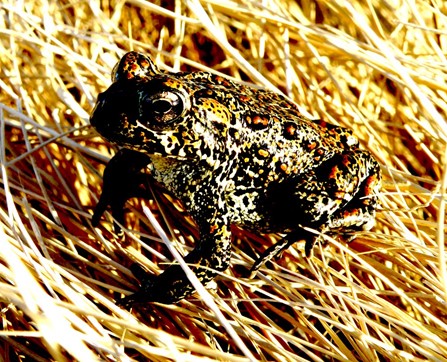Keeping the Heat On: Weighted Surveillance for Chytrid Fungus in Dixie Valley Toads
Abstract/Summary
Introduced fungal pathogens have caused declines and extinctions of naive wildlife populations across vertebrate classes. Consequences of introduced pathogens to hosts with small ranges might be especially severe because of limited redundancy to rescue populations and lower abundance that may limit the resilience of populations to perturbations like disease introduction. As a complement to biosecurity measures to prevent the spread of pathogens, surveillance programs may enable early detection of pathogens, when management actions to limit the effects of pathogens on naïve hosts might be most bene?cial. We analyzed surveillance data for the endangered and narrowly endemic Dixie Valley toad (Anaxyrus [= Bufo] williamsi) from two time periods (2011–2014 and 2019–2021) to estimate the minimum detectable prevalence of the amphibian fungal pathogen Batrachochytrium dendrobatidis (Bd). We assessed if detection ef?ciency could be improved by using samples from both Dixie Valley toads and co-occurring introduced American bullfrogs (Lithobates catesbeianus) and literature-derived surveillance weights. We further evaluated a weighted surveillance design to increase the efficiency of surveillance efforts for Bd within the toad’s small (<6km2) range. We found that monitoring adult and larval American bullfrogs would probably detect Bd more ef?ciently than monitoring Dixie Valley toads alone. Given that no Bd was detected, minimum detectable prevalence of Bd was <3% in 2011–2014, and <5% (Dixie Valley toads only) and <10% (American bullfrogs only) in 2019–2021. Optimal management for Bd depends on the mechanisms underlying its apparent absence from the range of Dixie Valley toads, but a balanced surveillance scheme that includes sampling American bullfrogs to increase the likelihood of detecting Bd, and adult Dixie Valley toads to ensure broad spatial coverage where American bullfrogs do not occur, would probably result in ef?cient surveillance, which might permit timely management of Bd if it is detected.
Publication details
| Published Date: | 2023-07-24 |
| Outlet/Publisher: | Journal of Wildlife Diseases |
| Media Format: |
ARMI Organizational Units:
Southwest, Northern California - BiologyTopics:
DiseaseInvasive Species
Species and their Ecology
Place Names:
NevadaKeywords:
amphibiansBd
bullfrog
disease

